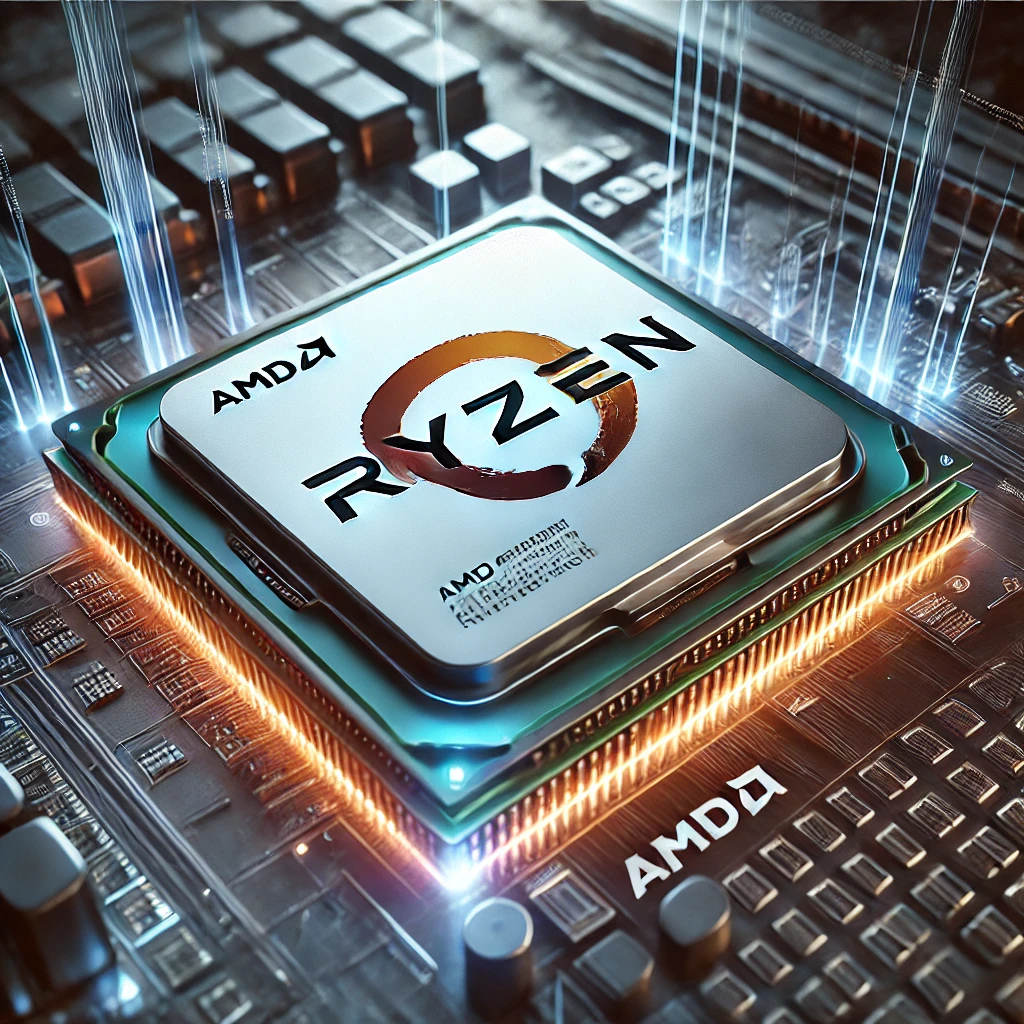
In the world of computing, few names have made as significant an impact as AMD Ryzen. Since its launch in 2017, Ryzen has disrupted the CPU market, offering powerful performance at competitive prices, rivaling tech giants like Intel and Nvidia. But what’s next for AMD Ryzen? Can it outpace its competitors in the long run? Let’s dive deep into the story of Ryzen, its technological breakthroughs, and its roadmap for the future.
The Rise of AMD Ryzen
Before Ryzen, AMD was struggling to keep pace with Intel’s dominance in the processor market. Then came the Ryzen series, built on the revolutionary Zen architecture, which changed the game:
- Performance & Efficiency: Ryzen CPUs delivered superior multi-core performance, ideal for gamers, content creators, and professionals.
- Cost-Effectiveness: AMD offered high-end performance at prices significantly lower than Intel’s flagship processors.
- Innovation: Features like simultaneous multi-threading (SMT), unlocked cores, and PCIe 4.0 support made Ryzen a preferred choice.
The Ryzen 7000 series, powered by the Zen 4 architecture and manufactured using a 5nm process, has further solidified AMD’s position as a leader in cutting-edge processor technology.
How AMD Ryzen Competes with Intel
For decades, Intel dominated the CPU market. But AMD Ryzen has emerged as a formidable challenger. Here’s how Ryzen competes:
- Core Counts and Multithreading:
Ryzen processors typically offer more cores and threads than Intel processors at comparable price points. This makes them ideal for multitasking and heavy workloads. - Energy Efficiency:
AMD’s advanced manufacturing processes (like the 5nm node) allow Ryzen CPUs to consume less power while delivering higher performance, especially compared to Intel’s earlier 10nm and 14nm processes. - Gaming and Productivity:
While Intel has traditionally been favored for gaming due to its higher single-core clock speeds, AMD has closed the gap with technologies like 3D V-Cache in processors like the Ryzen 7 5800X3D, which delivers superior gaming performance. - Value Proposition:
AMD consistently delivers better performance-per-dollar compared to Intel, attracting budget-conscious buyers without compromising quality.
AMD Ryzen vs. Nvidia: The Unexpected Rivalry
Though Nvidia primarily dominates the GPU market, it’s increasingly competing with AMD in the AI and high-performance computing (HPC) space. Here’s how Ryzen fits into this battle:
- Integrated Graphics:
AMD’s APUs (Accelerated Processing Units), like the Ryzen 7 7800U, combine powerful CPUs with integrated Radeon graphics, offering an all-in-one solution for budget gamers and creators. - AI Acceleration:
Nvidia’s strength lies in GPUs optimized for AI and machine learning, but AMD is catching up by integrating AI acceleration capabilities into its Ryzen processors. Future Ryzen CPUs may incorporate AI-dedicated cores, challenging Nvidia’s dominance. - Price Advantage:
AMD’s competitive pricing extends to GPUs and APUs, making it a preferred choice for gamers and professionals who want powerful performance without breaking the bank.
The Future of AMD Ryzen
AMD has already hinted at its vision for the next decade, and it looks promising:
- Zen 5 and Beyond:
AMD is set to release the Zen 5 architecture, focusing on even greater performance, efficiency, and AI integration. Expect processors with more cores, faster clock speeds, and advanced cache designs to outclass both Intel and Nvidia. - AI Integration:
The future of computing is AI-driven. AMD plans to integrate AI-dedicated cores into its Ryzen processors, enabling faster machine learning tasks, smarter gaming algorithms, and improved power efficiency. - Chiplet Design Leadership:
AMD’s innovative chiplet design has already revolutionized the CPU market. Upcoming Ryzen processors will likely refine this approach, offering modularity, scalability, and better yields for advanced nodes. - Expanding Ecosystems:
AMD is building a complete ecosystem around Ryzen, including motherboards, software optimizations, and Radeon GPUs. This synergy will offer unmatched performance for gamers and professionals alike.
Can AMD Ryzen Sustain Its Momentum?
While AMD Ryzen has established itself as a leader, staying ahead requires constant innovation. Here’s how AMD can maintain its competitive edge:
- R&D Investments:
AMD must continue investing in research and development to stay ahead of Intel’s innovations and Nvidia’s AI-centric strategies. - Focus on Sustainability:
The tech industry is moving toward eco-friendly solutions. AMD’s processors, known for their energy efficiency, position the company as a leader in sustainable computing. - Global Partnerships:
Collaborating with major PC manufacturers and cloud providers will ensure Ryzen processors remain a cornerstone of modern computing.
Final Thoughts
The AMD Ryzen processor series is more than just a product—it’s a movement that challenges monopolies, empowers users, and pushes the boundaries of technology. Whether you’re a gamer, a creator, or a professional, Ryzen represents performance, value, and innovation.
As AMD continues to innovate with future architectures like Zen 5 and Zen 6, its ability to compete with Intel and Nvidia will only grow stronger. The question isn’t whether Ryzen can compete—it’s how far ahead it will pull.
What are your thoughts on the future of AMD Ryzen? Let’s discuss in the comments below!
Share this article if you believe AMD Ryzen deserves the spotlight. Together, let’s spread the word about the processor redefining the industry!
